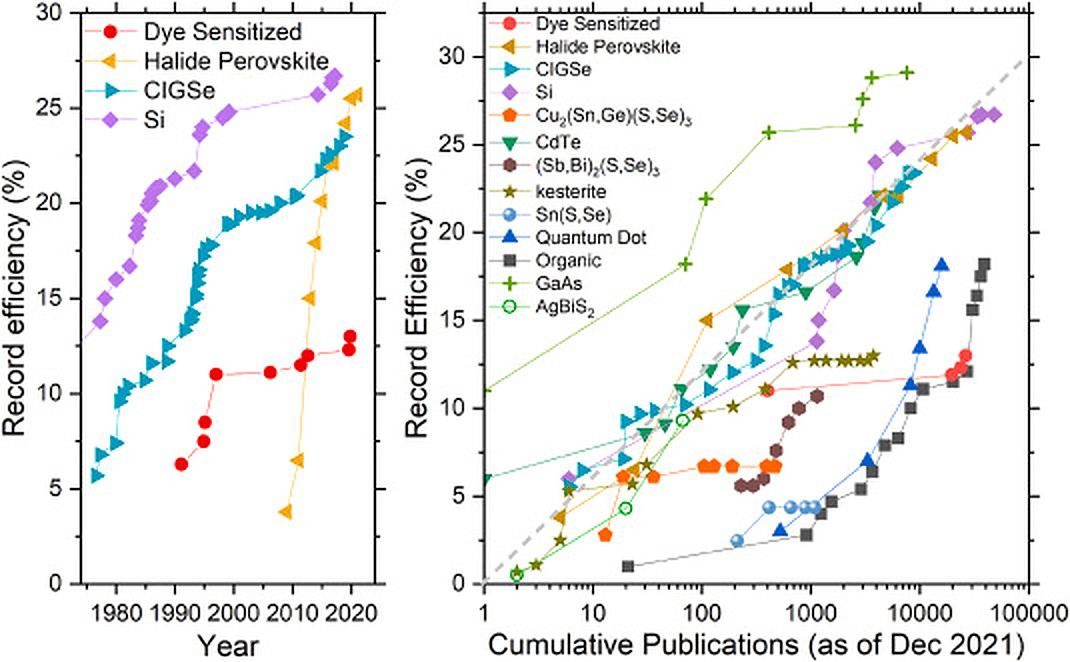From pv magazine Global
Researchers from the University of Luxembourg and the University of Utah in the United States have discovered that the increase in solar cell efficiency over the past few decades was strictly related to R&D, which underscores the crucial role of scientific institutions in the race to turn PV into the future of global energy.
“Normally, the efficiency performance progress of solar cell development is measured as a function of time,” the scientists said. “However, what is important, is not the time that has passed, but the research effort required to achieve an efficiency improvement.”
They noted the need to quickly identify the potential of non-crystalline silicon technologies, in order to estimate the real possibility of achieving significant cost reductions. They used the cumulative number of technical publications as a proxy for R&D efforts and assumed that each new publication advanced the field in a similar way. They found that the number of researchers and the effectiveness of research, as well as time and available resources, are strictly correlated to efficiency increases.
“Our analysis suggests that the average efficiency return on effort, at least by those motivated by publishing R&D results, are very similar for halide perovskites, CdTe and CIGSe,” the scientists explained. “This implies that exponential growth vs. year is driven more by exponential growth in researchers and efforts expended than the technology being qualitatively different than these other high-efficiency polycrystalline thin film technologies.”
They also discovered that solar cell efficiency increased by 5% for every order of magnitude of published articles.
“Which means that to go from 5% to 10% efficiency one hundred publications are required, whilst to go from 10 to 15% one thousand publications are required, and so on,” they concluded.
They presented the new learning curve methodology in “Efficiency versus effort: A better way to compare best photovoltaic research cell efficiencies?,” which was recently published in Solar Energy Materials and Solar Cells.
“While learning spillover from non-PV technologies, cross-pollination from other PV technologies, and hidden commercial effort are not accounted for by this metric, this analysis still yields useful and novel insights into PV technology trajectories,” they concluded.
This content is protected by copyright and may not be reused. If you want to cooperate with us and would like to reuse some of our content, please contact: editors@pv-magazine.com.









By submitting this form you agree to pv magazine using your data for the purposes of publishing your comment.
Your personal data will only be disclosed or otherwise transmitted to third parties for the purposes of spam filtering or if this is necessary for technical maintenance of the website. Any other transfer to third parties will not take place unless this is justified on the basis of applicable data protection regulations or if pv magazine is legally obliged to do so.
You may revoke this consent at any time with effect for the future, in which case your personal data will be deleted immediately. Otherwise, your data will be deleted if pv magazine has processed your request or the purpose of data storage is fulfilled.
Further information on data privacy can be found in our Data Protection Policy.